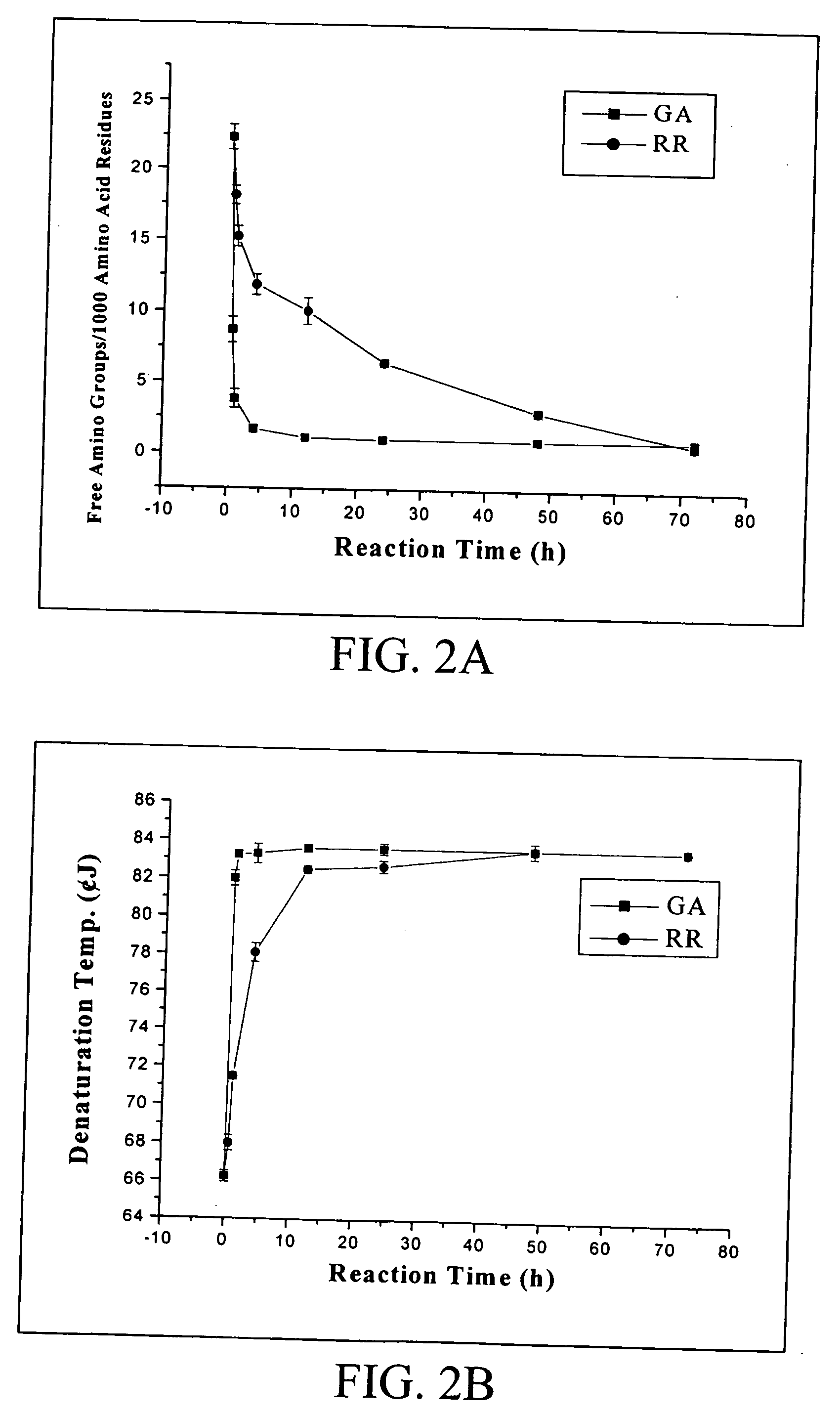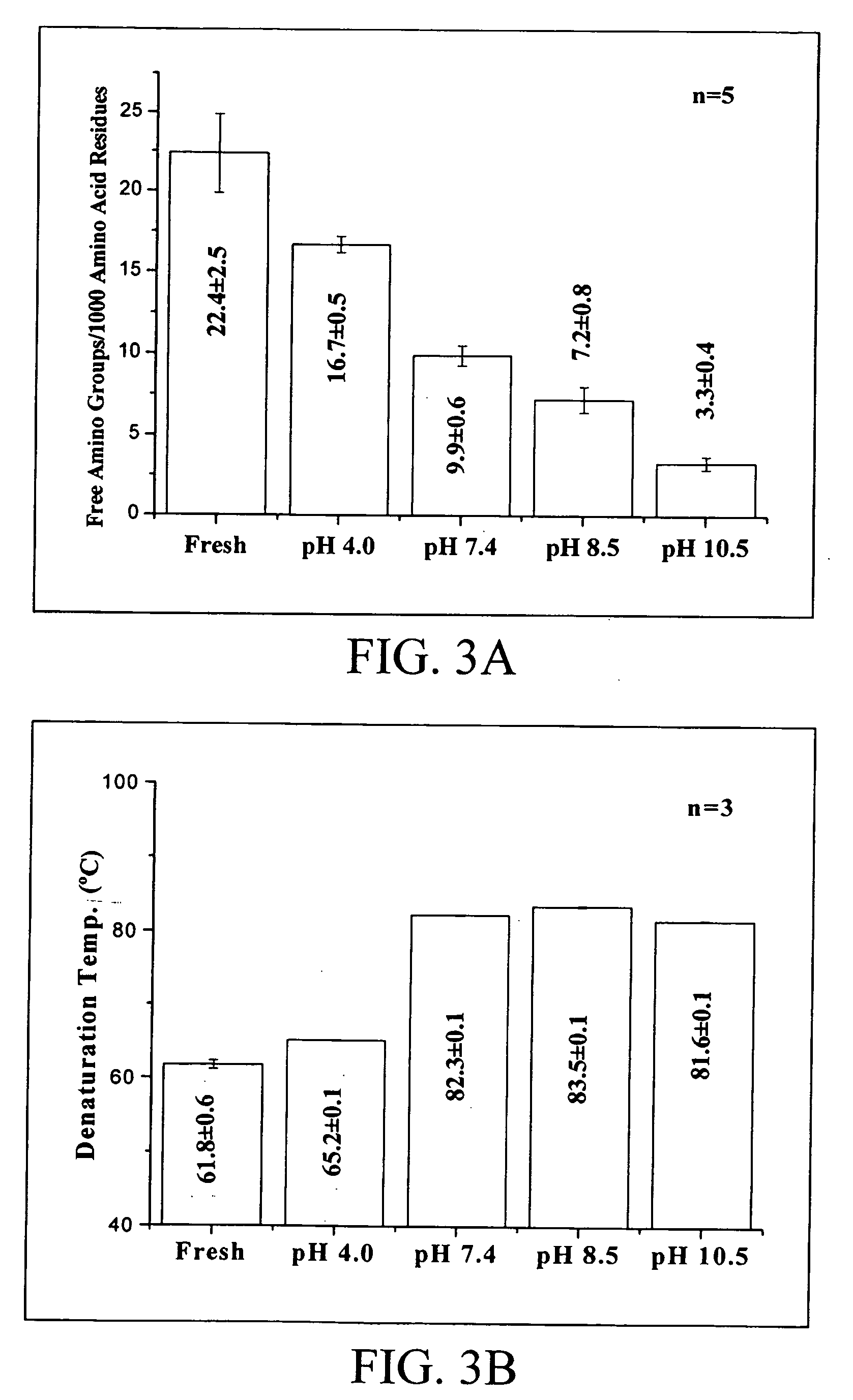Medical use of reuterin
a technology of reuterin and reuterin, which is applied in the field of medical use of reuterin, can solve the problems of not teaching the crosslinking process using a naturally occurring reuterin with antimicrobial property and extremely low cytotoxicity, suffering from some degree of cytotoxicity disadvantages,
- Summary
- Abstract
- Description
- Claims
- Application Information
AI Technical Summary
Benefits of technology
Problems solved by technology
Method used
Image
Examples
example 1
Fixation of Biological Tissues
[0047] Materials and Methods: In this example, fresh porcine pericardia procured from a slaughterhouse are used as raw materials. The procured pericardia were transported in a cold physiological saline solution. Upon received, the pericardia were first gently rinsed with fresh saline to remove excess blood on the tissue. Adherent fat then was carefully trimmed from the pericardial surface. The maximum period between retrieval and initiation of tissue fixation was consistently less than 6 hours.
[0048] In the first part of this example, the rate of tissue fixation by reuterin was investigated. Glutaraldehyde was used as a control. The trimmed pericardia were first fixed in a 0.068M aqueous glutaraldehyde or reuterin solution buffered with phosphate-buffered saline (PBS, pH 7.4) at room temperature (25° C.). The amount of solution used in each fixation was approximately 100 mL for each 6×6 cm porcine pericardium. Samples of each studied group then were t...
example 2
Biocompatibility Study and Subcutaneous Study
[0059] To evaluate the biocompatibility of the biological tissues fixed with reuterin, a subcutaneous study was conducted using a growing rat model. Fresh and the glutaraldehyde-fixed counterparts were used as controls.
[0060] Materials and Methods: Fresh porcine pericardia was used as raw materials and treated as in Example 1.
[0061] The trimmed pericardia were fixed in a 0.068M glutaraldehyde or reuterin solution at 37° C. for 3 days. The amount of solution used in each fixation was approximately 200 mL for a 6×6 cm2 porcine pericardium. The reuterin solution was buffered with sodium borate (pH 8.5), whereas the glutaraldehyde solutions were buffered with phosphate buffered saline (0.01M, pH 7.4). After fixation the test samples were divided into two groups. For the first group, the fixed pericardia were rinsed in sterilized phosphate buffered saline with a solution change for several times for approximately 5 hours. For the second gro...
PUM
| Property | Measurement | Unit |
|---|---|---|
| temperature | aaaaa | aaaaa |
| temperature | aaaaa | aaaaa |
| temperature | aaaaa | aaaaa |
Abstract
Description
Claims
Application Information
 Login to View More
Login to View More - R&D
- Intellectual Property
- Life Sciences
- Materials
- Tech Scout
- Unparalleled Data Quality
- Higher Quality Content
- 60% Fewer Hallucinations
Browse by: Latest US Patents, China's latest patents, Technical Efficacy Thesaurus, Application Domain, Technology Topic, Popular Technical Reports.
© 2025 PatSnap. All rights reserved.Legal|Privacy policy|Modern Slavery Act Transparency Statement|Sitemap|About US| Contact US: help@patsnap.com



